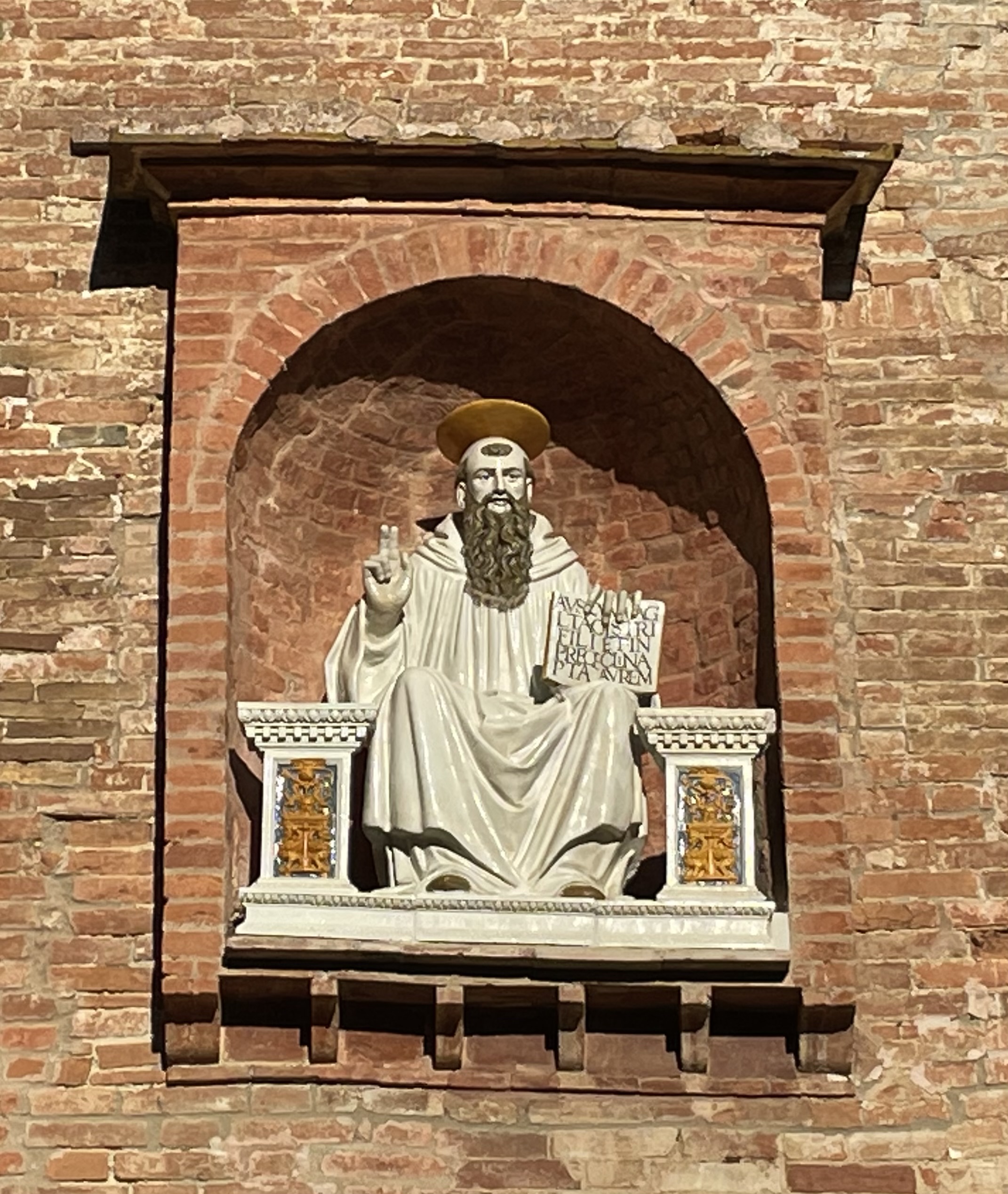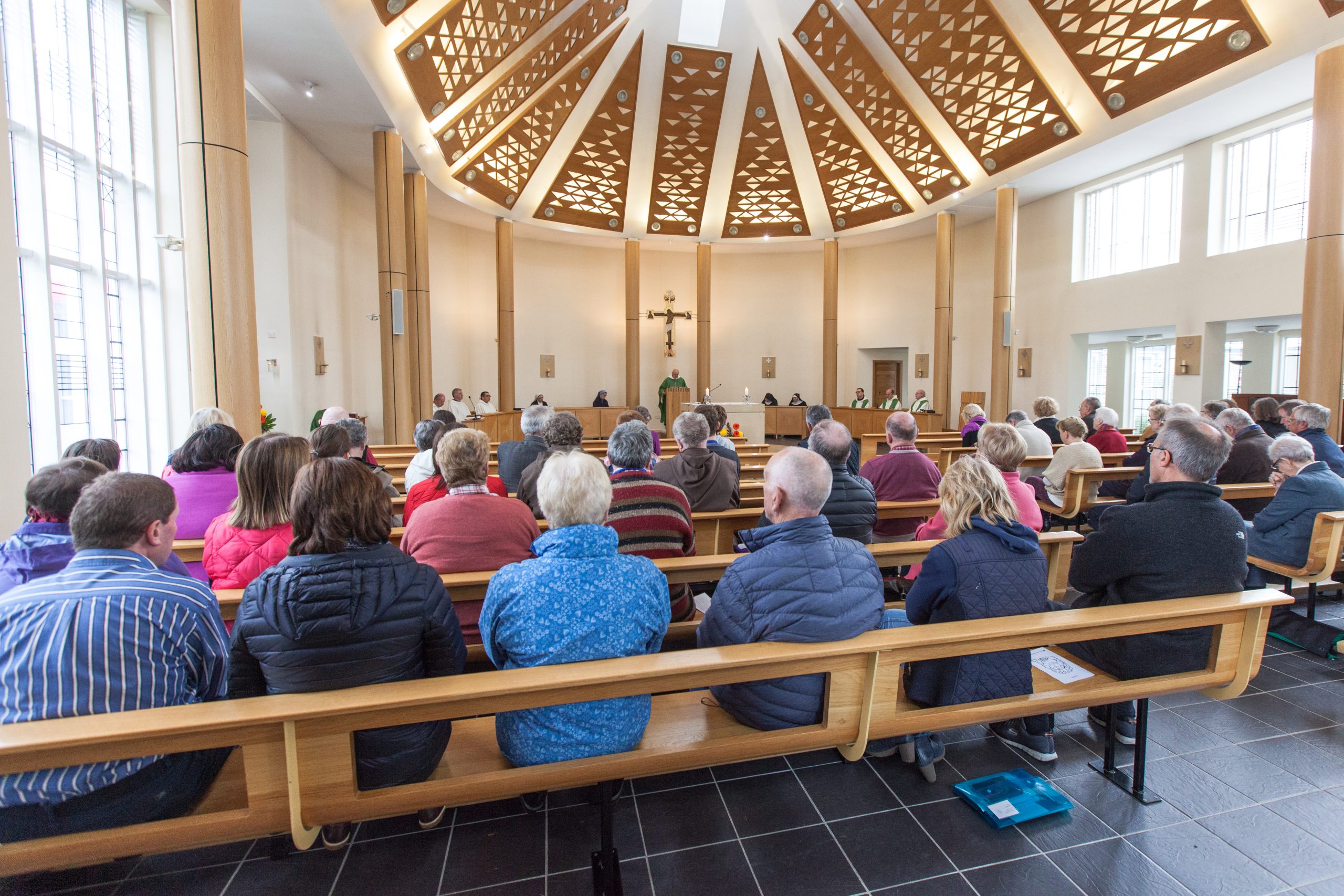History
St Bernard Tolomei & The Congregation of Monte Oliveto
St Bernard Tolomei & The Congregation of Monte Oliveto
Saint Bernard Tolomei, founder of the Archabbey of Monte Oliveto Maggiore, Italy, was born in Siena 1272. He was educated as a nobleman of the Tolomei family and had a distinguished career as a lawyer. At around the age of forty, he felt called to a radical living out of his Christian vocation.
With some companions, he retired to a remote place to the Southeast of Siena, known as the “Desert of Accona” . The first monks lived a eremetical lifestyle in the caves of the hillside. Gradually they evolved into a more organised community.
When later a monastery was founded on the site, it was given the name of Saint Mary of Monte Oliveto. According to the tradition,
“one day, while Bernard was praying in the place where the church was later to be built, he saw a silver stairway rising eastwards, to Heaven. Jesus Christ and his Holy Mother, dressed in white, were standing at the top. A group of monks, all dressed in white, were climbing the stairs helped by angels.”
(Chron. by Antonio da Barga).
Bernard and his companions received the Benedictine habit and the Rule of the Father of western monasticism. Since the time of their founder Olivetans have been clothed in white. A special characteristic of the Olivetan reform is its emphasis upon the spirit of communion uniting all its houses, called to form unum corpus – one body.
When, in 1348, the plague was spreading in Siena, Bernard returned to the town to care for his fellow monks at the monastery of St Benedict. According to tradition, he died – a victim of the plague on the 20th of August – among his spiritual sons. He was subsequently venerated as a Saint. He is officially celebrated on August 19th .
The Congregation of St Mary of Monte Oliveto
To foster the monastic movement which spontaneously developed around the Abbey of Monte Oliveto Maggiore, Clement VI canonically erected the Benedictine Congregation of St. Mary of Monte Oliveto on January 21, 1344. Although it was confined to Italy, the Congregation quickly developed and flourished particularly during the 14th and 17th centuries.
Suppression began in the late 18th century. However, the Congregation did not disappear. It developed again in the late 19th century (1875), in a small monastery at Settignano (Florence).
At present, the Congregation has a variety of abbeys and prioral churches in Italy, France, United Kingdom, Ireland, Belgium, Switzerland, Israel, Korea, USA, Mexico, Guatemala and Brazil.




